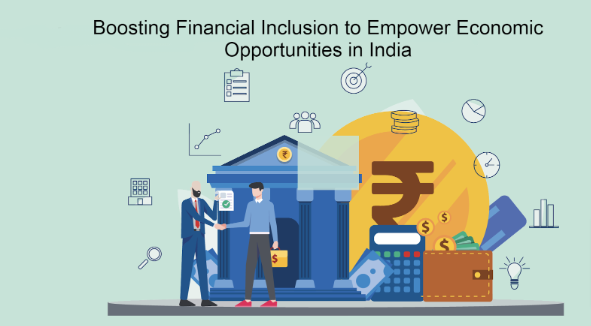India is hailed as a champion in facilitating financial inclusion across the strata of its vast population. UN officials and economists believe India’s journey should be an example for other developing nations. This makes sense, considering that financial inclusion in India has improved by 24% from FY 2017 to FY 2021.
Access to financial services has helped many low- and middle-income households. The immediate effects include streamlined consumption and investments in education and health, directly impacting the country’s holistic growth and development. Access to credit also improved, facilitating MSMEs to mushroom across sectors, which helps eradicate economic inequality.
UPI (Unified Payments Interface) solutions by the Indian finance business leaders are critical players in the fintech industry’s rise. Experiencing a CAGR growth of 400% during FY 17-21 has done a lot to empower the population and boost inclusion. Sharing his thoughts on financial inclusion, Sanjiv Bajaj, Chairman and Managing Director, Bajaj Finserv Ltd., says, “We need to create access, and by this, I mean access to the bottom of the pyramid. We cannot be a developed country if the bottom 40% of our population is excluded from financial services.”
These words clearly highlight the role of empowering leadership, which ensures financial inclusion remains the primary objective of innovation in the finance sector. India has proven itself capable, but how did this come to pass? Read on to find out.
Private Sector’s Role in Boosting Financial Opportunities and Outcomes
The private sector has played an essential role in making financial services attractive for the underserved population in India. By 2017, almost 80% of adult Indians owned a bank account, which was merely 53% in 2014. One of the key reasons behind this tremendous increase was the creation of a robust digital infrastructure by finance business leaders, which provided a fertile ground for technology-enabled banking solutions to become available to all.
However, the World Bank Report also showed that less than half of the population having bank accounts use them regularly. To achieve more sustainable financial inclusion, the private sector is already expanding its operations in semi-urban and rural areas in India.
Encouraged by the government, the private financial sector has also renewed its focus on the financial needs of women, micro-entrepreneurs, and farmers. This could play a central role in taking India’s financial inclusion journey to the next level. Moreover, empowering future leaders to forge cross-sectoral partnerships can bring together companies committed to boosting financial inclusion in the country.
Promoting Financial Access Through Policy Initiatives
While finance business leaders in the private sector have been leveraging robust technology to enhance inclusion and equality, the Government of India’s objective has been to boost inclusion by providing financial services at affordable costs to low-income groups. As early as 2004, the Reserve Bank of India (RBI) set up a Khan Commission to look into the gaps relating to financial inclusion and recommend methods to mitigate them.
As per RBI guidelines, banks have set up Financial Literacy Centres (FLCs) with the objective of imparting knowledge and inculcating the habit of savings in underserved sections of society. With the introduction of the Jan Dhan Yojana (JDY) in August 2014, the Central Government set out to provide banking solutions to every unbanked household in India. The results of this initiative have been tremendous, as shown in the World Bank Report quoted earlier.
In addition, the direct benefit transfer (DBT) scheme has also been an important component of the government’s objective of increasing financial inclusion. This scheme provides welfare benefits directly to the beneficiary’s bank or postal account. For instance, in 2016 alone, the GoI transferred LPG subsidies to bank accounts of more than 150 million registered beneficiaries. Other initiatives such as Pradhan Mantri Jeevan Jyoti Bima Yojana, Pradhan Mantri Mudra Yojana and Atal Pension Yojana are also working to improve financial inclusion.
Bridging the Gender Divide in Access to Financial Services
India’s growth in the number of account owners has seen a multi-fold increase. This has helped the socio-economic development of one of the most vulnerable sections of the Indian economy, i.e., women. From 2005-06 when only 15.1% of women in India had bank accounts, to 2021, the proportion increased to 78.6% as per the National Family Health Survey-5 of 2019-21.
With the introduction of JDY, the gender gap in ownership of bank accounts declined from 20% to 6% from 2014 to 2017. Reputed finance business leaders in the private sector have also come up with numerous schemes specific to women. From credit cards to savings accounts and home loans to investment platforms, women-specific services and rate slashes attract this population segment to adopt financial services.
The DBT has also positively impacted women’s financial inclusion. For instance, women receiving wages under Mahatma Gandhi National Rural Employment Guarantee Scheme (MGNREGS) directly into their bank accounts were likely to receive further employment.
These advances prove that social and economic empowerment simply requires investment in enabling forces. Finance business leaders who build tools that empower the masses are paving the way towards greater progress. Famous personalities in the field of finance are working in unity towards this goal, as holistic economic development is only possible when working cohesively together.








